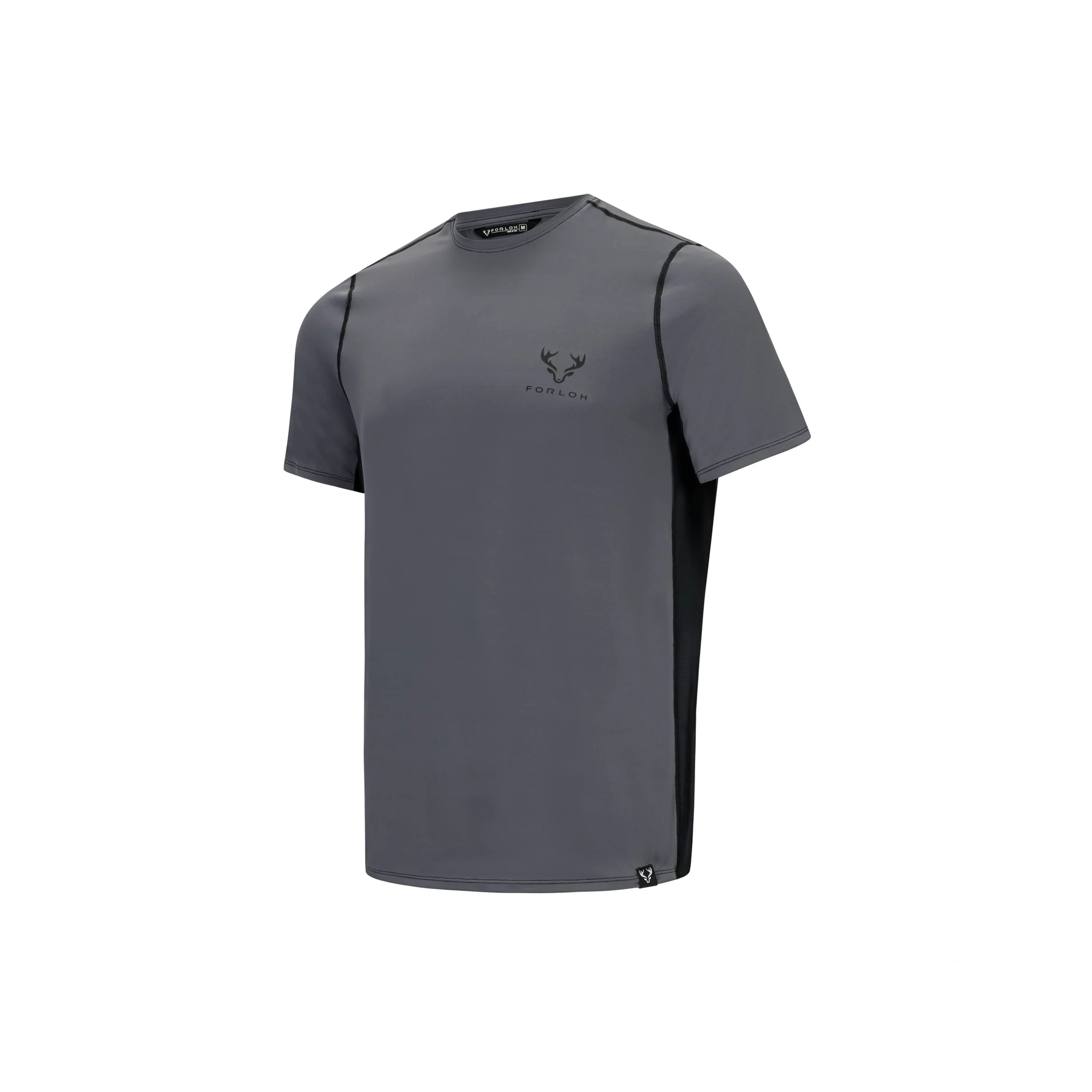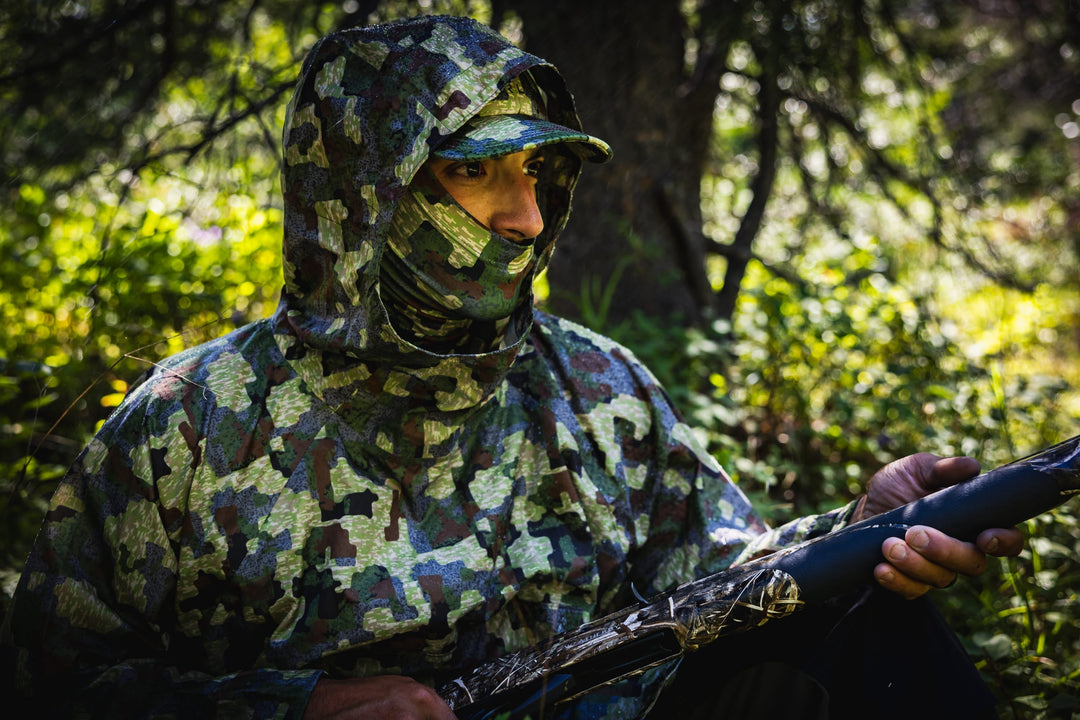FORLOH Chief Design Officer James Mohan on how the company’s apparel system works
The approach FORLOH has taken with its technical wear might look traditional — wicking base layer, insulation in the middle, weatherproofing outside — but appearances are where the similarities stop. Not only is each piece of FORLOH gear constructed for best-in-class performance when worn independently, the gear has been engineered to work as a suite that outclasses every system on the market.
“At other companies, if we wanted to make a jacket, a sweater, a T-neck, that all happened unilaterally. One team designed one thing, another team did something else, and there was no consideration whether a piece complemented or impeded the other,” says James Mohan, FORLOH’s chief design officer.
Mohan has over 20 years of experience designing technical apparel for a range of different brand names that would be familiar to any hunting or outdoor enthusiast. “At FORLOH, before we ever talked about individual pieces of apparel, we started by setting goals and metrics for the entire system.”

Whether used solo or in combination, the goal was for all FORLOH gear to be lightweight and packable, it needed to be breathable and regulate moisture, and it had to be stealth in terms of both sound and smell.
“The idea was that if we could make each piece do those three things as best they could solo, but also craft everything to work in conjunction with everything else,” says Mohan, “we would build a system that outperformed anything available by a wide margin.”
Mohan says FORLOH has done just that. But to grasp how the system works, it’s important to first understand each component.
Like many base layers, FORLOH’s next-to-skin Deep Space layer is knitted, not woven, which means it’s constructed of a single, looped filament instead of multiple crisscrossed yarns, a process that results in a lighter, more packable, and more porous material. But 40 percent of the yarn in FORLOH’s fabric is Trizar, which Mohan likens to the Mylar that composes the silver blankets donned by New York and Boston marathoners post-race. “The technology was developed by NASA for the infrared tiles on the Space Shuttle. Instead of making a crinkly piece of cloth from it, our suppliers extruded the metal additives at a nano-particle level into the yarn,” says Mohan. “It reflects heat back to your skin, but also pulls moisture from your skin to the fabric surface and allows it to dry.”
Two additional Polygiene treatments at the molecular level in the yarn, which neutralize bacteria and absorb odor respectively, ensure that hunters aren’t just warm and dry, but also scent free. Despite all the tech, the Deep Space layer feels as cozy as a cotton sweatshirt. “We co-developed all of it between the scientists and the mill,” says Mohan. “It didn’t just have to perform. It also had to feel good on the skin.”
On top of the base comes FORLOH’s ThermoNeutral down, an insulation layer that not only adds warmth but also actively contributes to moisture transfer. First, the duck feathers undergo a hydrophobic treatment, which reduces moisture absorption by 60 percent compared with untreated down. FORLOH chose ripstop nylon as a casing fabric for its lightweight and compressible characteristics, but the company found that multiple layers of the material inhibit breathability. “Down has a tendency to wet out because the fabric containing it doesn’t allow the moisture to pass,” says Mohan. The natural venting points are the areas between baffles, but on a sewn baffle design, used industry wide, the needle perforations let in moisture that saturates the down and your skin. “So the real challenge is to create a system that allows moisture out, but not in.”
To accomplish this, FORLOH turned to sonic welds between each down baffle. By bonding the inner and outer layers of nylon with heat rather than thread, the integrity of the fabric is preserved to ensure a weatherproof barrier for down pants and jackets, while the heat process creates a porosity that allows vapor from beneath to escape. “The moisture that’s being pulled up by the Trizar in the base layer moves away from the down because of the hydrophobic treatment and migrates out through the pores in the sonic welds,” explains Mohan. “You can go as hard as you want in this down, and it won’t end up wet and clammy."
The final layer is the AllClima outerwear, available in hard and softshell, both of which provide equal weather protection. Like many major brands, FORLOH uses a vapor barrier constructed of a proprietary ePTFE, akin to the Teflon in pots and pans. What sets AllClima outerwear apart is the way in which the durable water repellent coating (DWR), which adds waterproofing, is applied to the fabric. Whereas almost every manufacturer dips or sprays on its DWR, a process that clogs the pores of the fabric and inhibits moisture from escaping, FORLOH’s protection is applied at the molecular level by running a charge through the yarn before it’s woven into fabric. This exclusive process, Airadigm’s Pulse-Plasma technology, requires just 1 percent of the DWR used in other treatments, which produces fabrics that are both more waterproof and significantly more breathable than anything on the market.

“The barrier that keeps water out on most shells also prevents moisture from escaping. That’s why you often end up wet while exercising in a shell: it’s not the weather, it’s your perspiration getting trapped,” says Mohan. “Our technology keeps the elements outside, but it also allows vapor to pass freely from the inside, which keeps you dry.”
The combination of all these technologies is what makes the system so effective. The base layer reflects in heat but pushes out moisture generated by your body. Some of that moisture evaporates in the space between layers; what’s left is driven outward by body heat and pushed through the porous mid- and top layers.
The process is surprisingly simple in concept, but the multi-layer execution was anything but. Initial fabric tests on the base layer yielded adequate moisture transfer numbers, but FORLOH continued development for months, changing the fabric two or three times in order to get the right stretch and feel. And though the sonic welding process made sense theoretically, the wheel that created the weld on the first batches created small perforations, which led FORLOH to create its own welding wheel. The company also switched the shell from a woven to a knit late in the process to save weight and keep the outerwear silent. And then there were all the fit concerns, where sleeves had to be cut to work together, the right amount of space had to be created between layers to ensure evaporation, and hem lines had to be tailored for protection during all activities and positions. It’s relatively easy to create a single layer that does what it needs to do,” Mohan explains. “It took a lot of research and iterations to make it all work together.”
The results, however, impress even Mohan. “I’ve been doing this for several decades, and this gear is the most meticulously researched and technologically advanced apparel I’ve ever helped to create,” he says. He acknowledges that might sound like every company’s marketing hype, but he says the proof is in wearing the gear. “I’m confident that no matter what other apparel people have used, they will try this system and immediately recognize how much better it works.”








